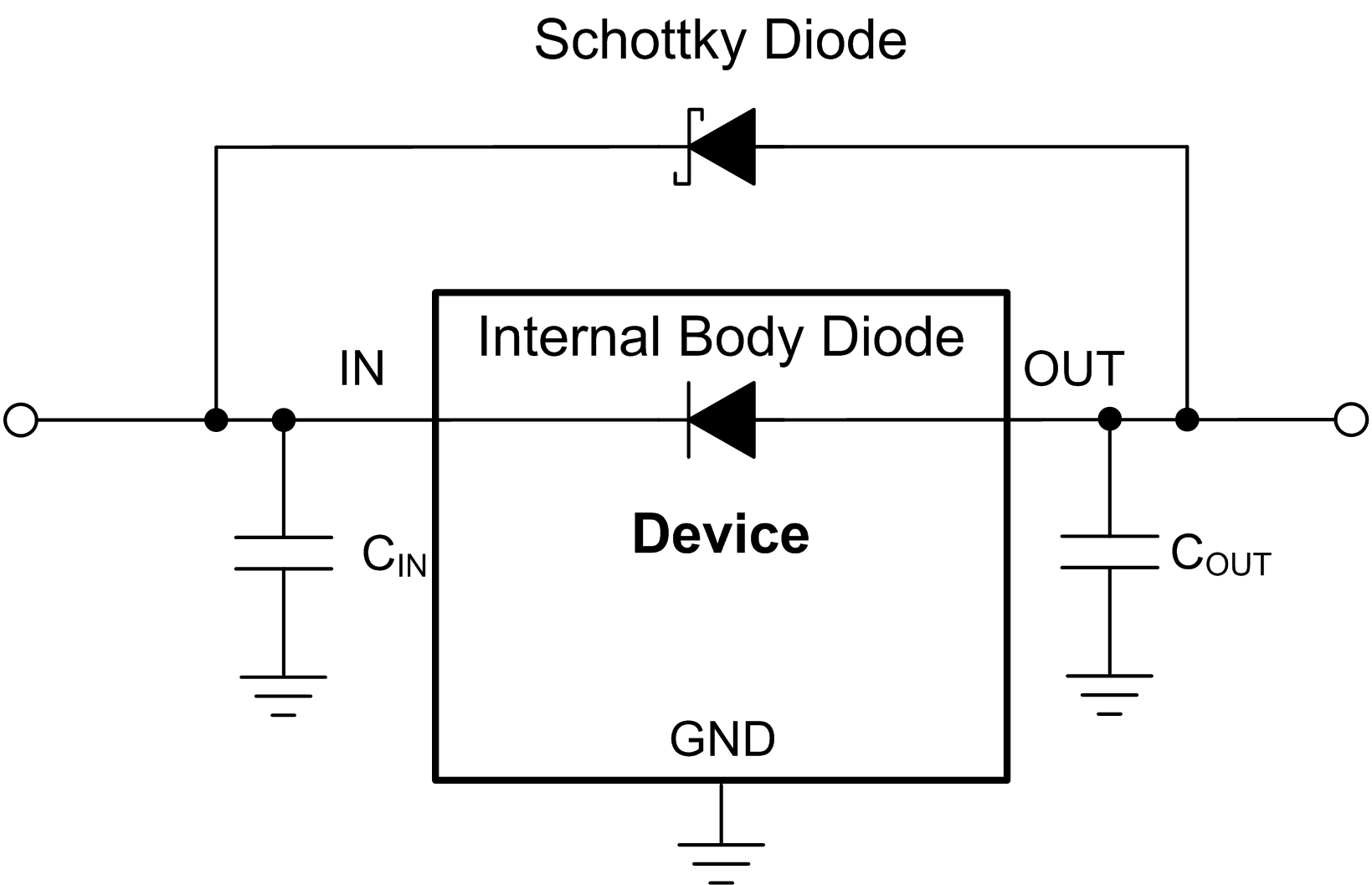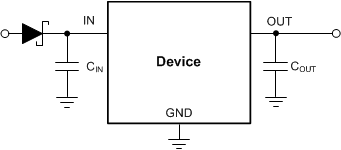ZHCSHP4B December 2018 – October 2019 TPS7A26
PRODUCTION DATA.
- 1 特性
- 2 应用
- 3 说明
- 4 修订历史记录
- 5 Pin Configuration and Functions
- 6 Specifications
- 7 Detailed Description
- 8 Application and Implementation
- 9 Power Supply Recommendations
- 10Layout
- 11器件和文档支持
- 12机械、封装和可订购信息
封装选项
请参考 PDF 数据表获取器件具体的封装图。
机械数据 (封装 | 引脚)
- DRV|6
散热焊盘机械数据 (封装 | 引脚)
- DRV|6
订购信息
8.1.4 Reverse Current
Excessive reverse current can damage this device. Reverse current flows through the intrinsic body diode of the pass transistor instead of the normal conducting channel. At high magnitudes, this current flow degrades the long-term reliability of the device.
Conditions where reverse current can occur are outlined in this section, all of which can exceed the absolute maximum rating of VOUT ≤ VIN + 0.3 V.
- If the device has a large COUT and the input supply collapses with little or no load current
- The output is biased when the input supply is not established
- The output is biased above the input supply
If reverse current flow is expected in the application, external protection is recommended to protect the device. Reverse current is not limited in the device, so external limiting is required if extended reverse voltage operation is anticipated.
Figure 37 shows one approach for protecting the device.
 Figure 37. Example Circuit for Reverse Current Protection Using a Schottky Diode
Figure 37. Example Circuit for Reverse Current Protection Using a Schottky Diode Figure 38 shows another, more commonly used, approach in high input voltage applications.
 Figure 38. Reverse Current Prevention Using A Diode Before the LDO
Figure 38. Reverse Current Prevention Using A Diode Before the LDO